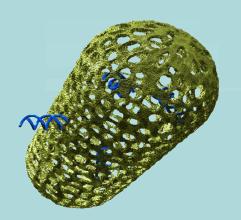Dr Iain Comerford from the University's School of Molecular and Biomedical Science earned a three-year fellowship from MS Research Australia to work on this project. It is directed towards understanding how specific enzymes in cells of the immune system regulate immune cell activation and migration.
Along with his colleagues, Professor Shaun McColl and PhD students Wendel Litchfield and Ervin Kara, he focused on a molecule known as PI3Kgamma, which is involved in the activation and movement of white blood cells.
"There's already been worldwide interest in PI3Kgamma in relation to other human inflammatory disorders, such as diabetes and rheumatoid arthritis, and our study links this molecule and MS," Dr Comerford, who is a Multiple Sclerosis Research Australia Fellow at the University of Adelaide, said.
Dr Comerford and his colleagues have now shown that this molecule is crucial for the development of experimental autoimmune encephalitis (EAE) in an animal model developed as a standard laboratory system for studying MS.
The team showed that a genetic alteration, which knocked out that particular molecule, resulted in a high resistance to the development of EAE and therefore protected against the nervous system damage typical of multiple sclerosis.
When the molecule is present, severe damage to the insulating myelin in the central nervous system was evident, resulting in inflammation in the spinal cord and myelin loss.
Following up on this result, the team then used an orally active drug that blocks the activity of the molecule PI3Kgamma at the first signs of disease onset. The drug even suppressed the development of EAE and reversed clinical signs of the disease.
"Our results so far have been very promising," Dr Comerford said.
"We've shown that by blocking PI3Kgamma, we can reduce the activation of self-reactive immune cells, reduce the release of inflammation-inducing molecules from immune cells, and also result in a dramatic reduction in the movement of immune cells into the central nervous system.
"Our hope is that future therapies for MS might target this molecule, which could very specifically dampen the damaging inflammation in the central nervous system.
"It will now be crucial to determine whether targeting these molecules could be a safe and effective way to treat MS in humans."
Jeremy Wright, CEO of MS Research Australia, said: "It is very rewarding to see that MSRA has been able to support these exciting developments by a young up-and-coming researcher. We will await his further results with great interest."
The research results were published recently in the online journal PLOS ONE.

